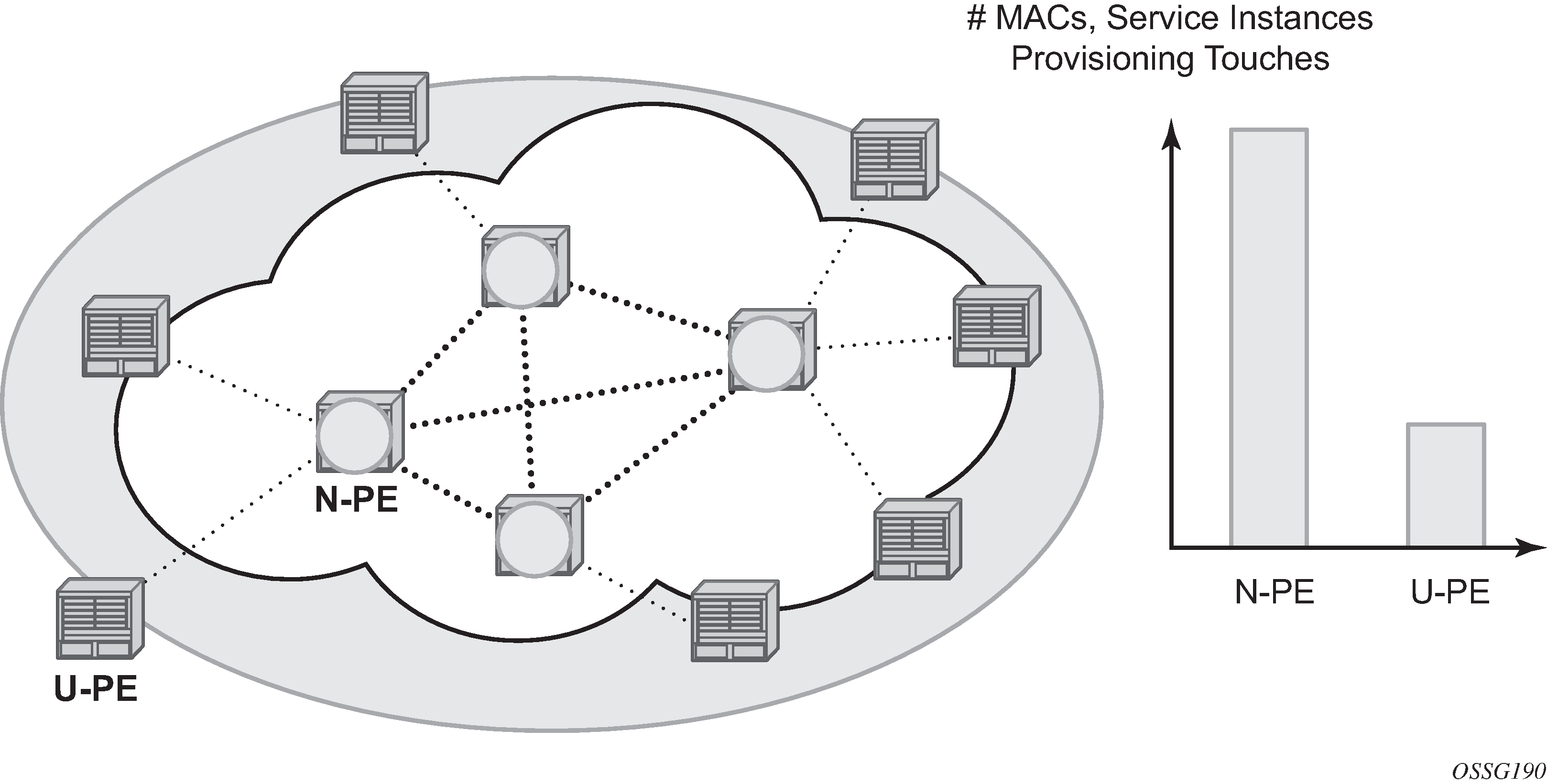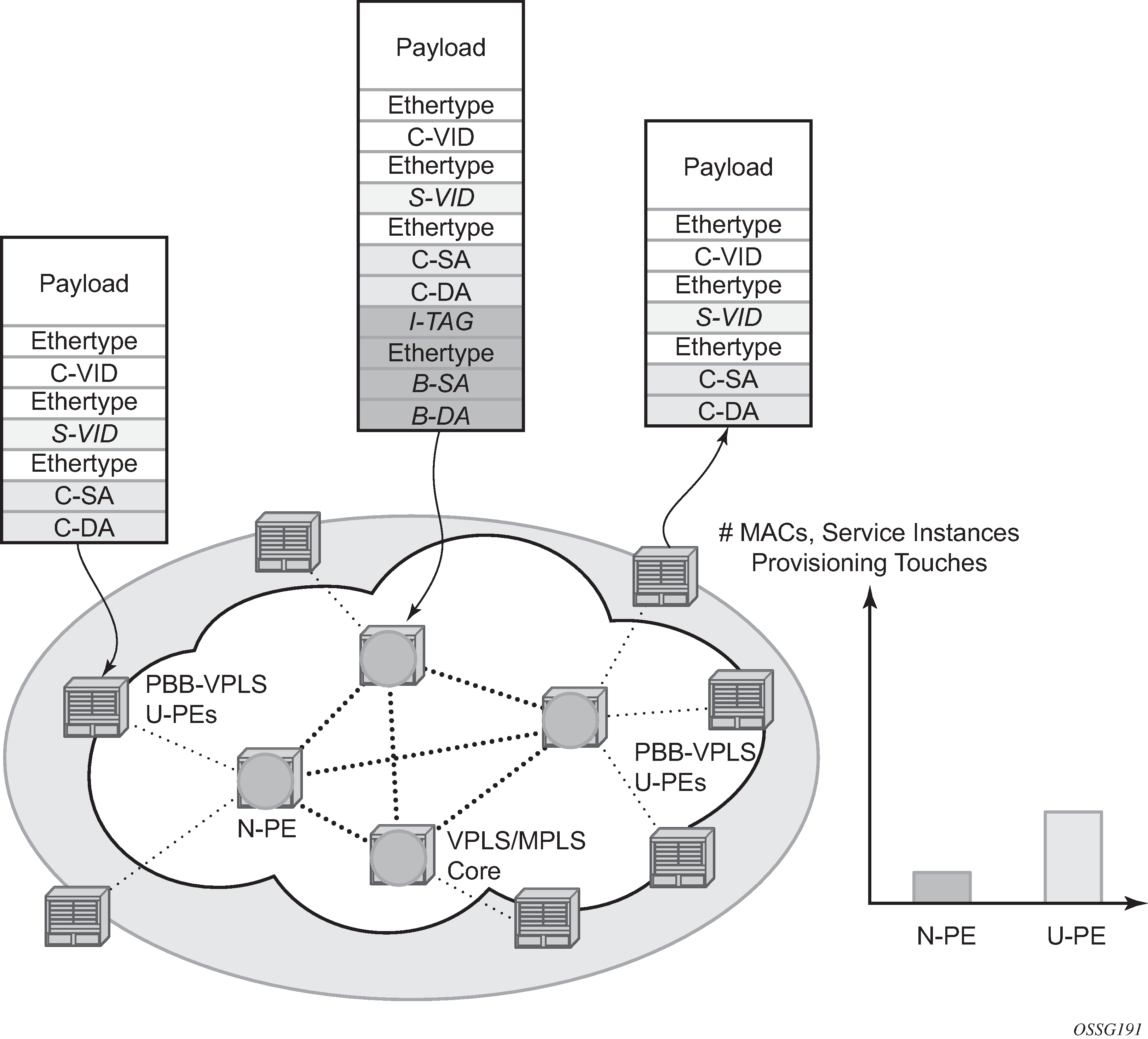HVPLS introduced a service-aware device in a central core location to provide efficient replication and controlled interaction at domain boundaries. The core network facing provider edge (N-PE) devices have knowledge of all VPLS services and customer MAC addresses for local and related remote regions resulting in potential scalability issues as depicted in Figure: Large HVPLS deployment.

In a large VPLS deployment, it is important to improve the stability of the overall solution and to speed up service delivery. These goals are achieved by reducing the load on the N-PEs and respectively minimizing the number of provisioning touches on the N-PEs.
The integrated PBB-VPLS model introduces an additional PBB hierarchy in the VPLS network to address these goals as depicted in Figure: Large PBB-VPLS deployment.

PBB encapsulation is added at the user facing PE (U-PE) to hide the customer MAC addressing and topology from the N-PE devices. The core N-PEs need to only handle backbone MAC addressing and do not need to have visibility of each customer VPN. As a result, the integrated PBB-VPLS solution decreases the load in the N-PEs and improves the overall stability of the backbone.
The Nokia PBB-VPLS solution also provides automatic discovery of the customer VPNs through the implementation of IEEE 802.1ak MMRP minimizing the number of provisioning touches required at the N-PEs.